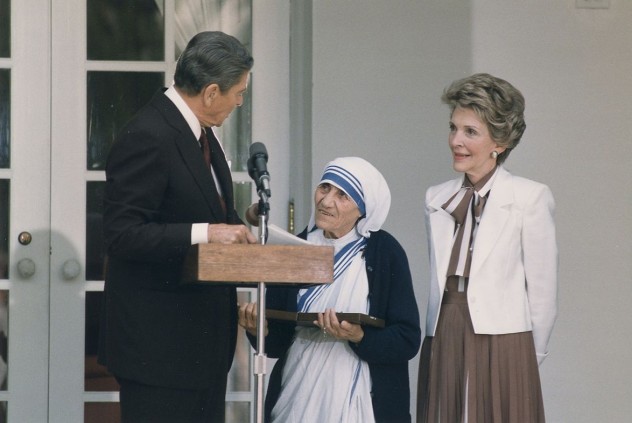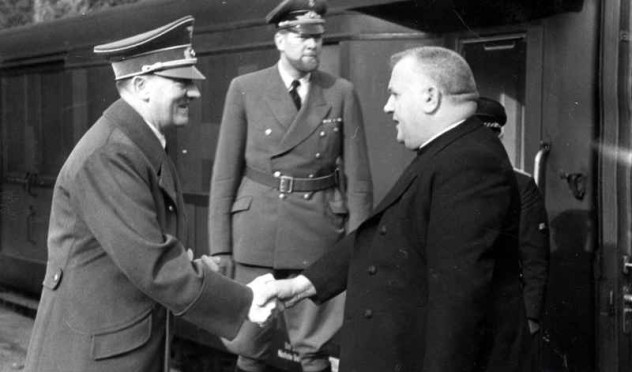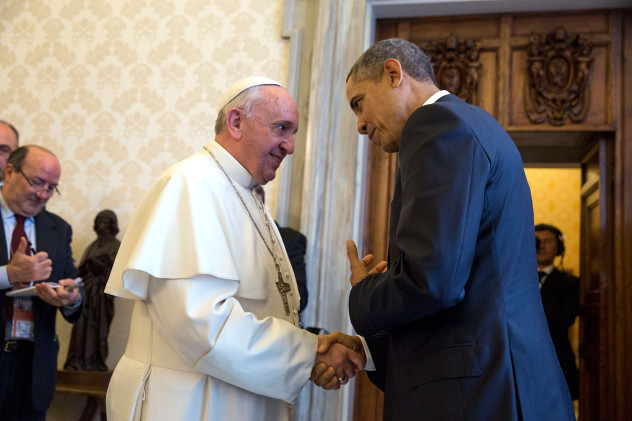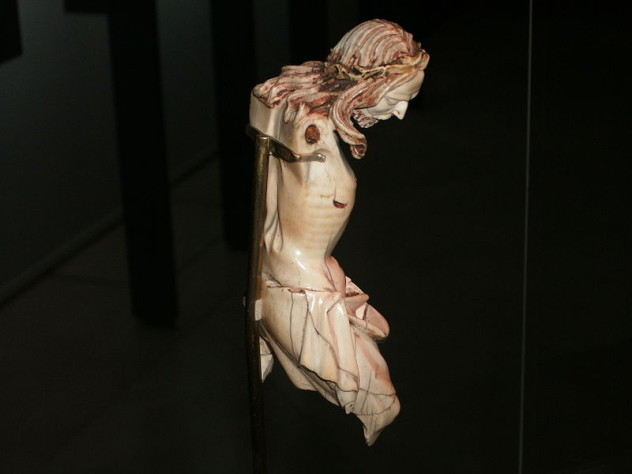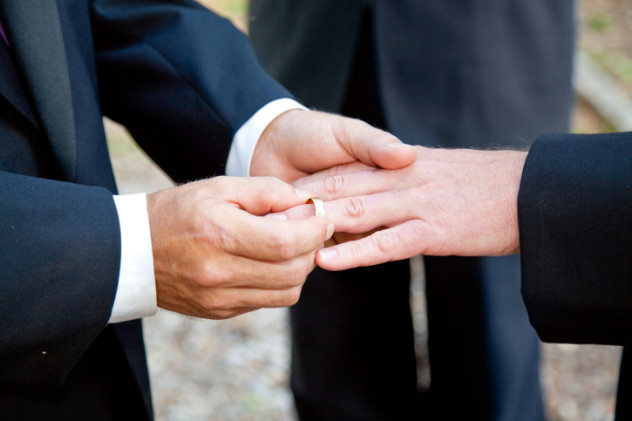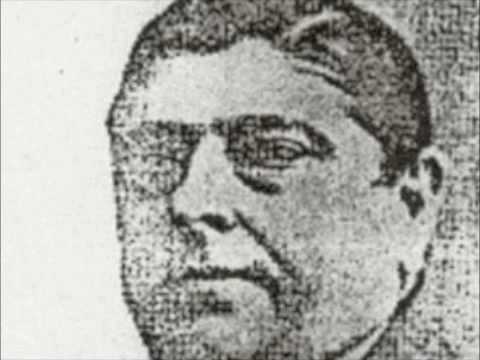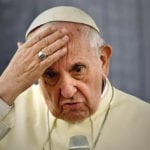10 The Lies Of Mother Teresa
Although Mother Teresa was beatified as a saint by the Catholic Church in 2003, in reality she was far from the saint the Church would lead you to believe. In fact, Mother Teresa isn’t even her real name; she was born Anjeze Gonxhe Bojaxhiu in Albania. The issues certainly don’t end with her pseudonym. Researchers today have called Mother Teresa an empty “PR ploy” by the Vatican to rehabilitate their tarnished image. Mother Teresa’s claim to fame is helping poor around the world, but she did quite the opposite throughout her lifetime. Mother Teresa made niceties with right-wing Haitian Dictator Jean-Claude Duvalier and accepted money from him which had been stolen from Haiti’s poor. Duvalier was known for stealing millions from Haiti’s poor so that he could maintain his own lavish lifestyle. He spent $2 million of Haiti’s money to pay for his extravagant wedding. Duvalier also profited from drug trafficking and selling the body parts of deceased Haitians. Mother Teresa rubbed elbows with another thief by the name of Charles Keating. If that name rings a bell for you, it should; Keating is the banker best known for defrauding American taxpayers out of over $3 billion during the savings and loan crisis of the ’80s and ’90s. Keating donated $1.25 million to Mother Teresa and lent her his private jet so that the missionary could jet set around the world. Keating would later be convicted in state and federal courts of a litany of crimes including racketeering, fraud, and conspiracy. After Keating was convicted, Mother Teresa refused to return the stolen money and asked one of the courts to overturn his sentence. What she did with the money remains in question. The care she gave to the sick and poor in her hospices was observed to be wholly unsanitary, medical care was wholly insufficient, and crucial pain management for the dying was cruelly inadequate. Her hospices were found to not even distinguish between terminally ill patients and those who could be cured. Consequently, patients with curable illness died from the poor, unsanitary treatment they received from Mother Teresa’s facilities. Her motivation for setting these hospices may have been less compassion and more fundamentalism. Mother Teresa callously encouraged those who worked in her hospices to baptize dying patients, regardless of the patient’s religious beliefs or consent. Mother Teresa’s fundamentalism stretched beyond the subject of baptism. She claimed that abortion was “the greatest enemy of peace in the world,” and opposed contraception even in the cases of rape and incest. Mother Teresa also defended a pedophilic priest named Donald McGuire, trying to get him leniency after he was convicted of raping children. She wanted him to be reinstated as a priest despite his heinous crimes. The greatest irony of it all is that by the end of her life, Mother Teresa didn’t even believe in the fundamentalism she spouted or the religion she spent her life serving. After her death, letters Mother Teresa had written to the Vatican surfaced and revealed that she had stopped believing in the religion she plugged. Mother Teresa wrote: “What do I labor for? If there be no God, there can be no soul. If there be no soul then, Jesus, You also are not true.”
9 Alliance With Radical Islamists
In 1994, 180 countries met to draft a proposal with the United Nations to address the coming crisis of overpopulation. The plan met an unexpected foe in the Catholic Church. In its opposition to the plan, the Catholic Church reached out to unlikely allies: radical Islamists. The population plan drafted by representatives from 180 countries sought to tamper overpopulation by including measures to increase women’s rights and reproductive rights around the world. The Catholic Church felt the language went against their conservative views on abortion rights and sexual freedom. But the Catholic Church had a hard time finding allies around the world to join in their opposition to the measures, so they allied themselves with “radical and fundamentalist governments and groups in Islamic countries.” The move received swift denunciation from Western countries around the world. Western diplomats worried that the Vatican was bolstering Islamic radicals with plans to overthrow governments around the Middle East and form their own radical Islamic state. After Iran signed on with the Catholic Church, Deputy Foreign Minister Mohammad Hashemi Rafsanjani hinted at a grander alliance between the Vatican and Iranian Islamist. Rafsanjani said that “Collaboration between religious governments in support of outlawing abortion is a fine beginning for the conception of collaboration in other fields.” The Vatican also struck a similar alliance with Libya and other Islamic fundamentalist governments. As a result of the deal, the Vatican tried to help Libya quell its conflicts with Western nations. The Western nations sought to clamp down on the dictatorship after it sponsored the Lockerbie terrorist attack of 1988, which resulted in the deaths of 259 individuals.
8 Jozef Tiso
The Catholic Church is known to have allied itself with fascists in World War II, most notably with Mussolini by signing the Lateran Treaty. However, one lesser-known fascist dictator of the time was actually a practicing Catholic priest. Before Jozef Tiso got into the dictator game, he cut his teeth in a prestigious seminary in Vienna and became an ordained Catholic priest. Father Tiso then worked as an assistant priest before becoming the Spiritual director of one of Slovakia’s largest seminaries. Soon, Tiso began to moonlight in politics. He joined Slovakia’s fascist party and served as an editor of a Slovakian newspaper in which he published a series of extremely anti-Semitic articles in the run-up to the Holocaust. It wasn’t long before Tiso became one of the leaders of the fascist Slovak People’s Party. Father Tiso and his confidants shifted the party to the hard right in line with the nearby Nazi party, embracing the clerical nationalism and fascism inspired by Tiso’s own brand of right-wing Catholicism. Father Tiso was elected into Slovakia’s parliament in 1925, but he would ascend to the role of dictator when Nazi Germany occupied Sudetenland in 1938. Tiso swiftly established a dictatorship and made an alliance with the Nazi party. Slovakia was turned into the Slovak Republic, a puppet state of Nazi Germany. During this time, 16 of 63 members of Slovakia’s parliament were priests. Slovakia’s fascist parliament quickly began passing anti-Jewish legislation. Slovakia then became the first country to begin deporting its Jewish residents to concentration camps run by Nazi Germany, effectively setting the Holocaust into motion. According to a December 1940 census, there were 88,951 Jews in Slovakia at the time. First, Tiso’s Slovakia sent 20,000 Jews to the Nazis to be used in work camps before they were killed. By June 1924, around 52,000 Jews were deported from Slovakia—almost 60 percent of Slovakia’s Jewish population. Most were sent to Auschwitz, where they were murdered by the Nazis. Hitler witnessed one of Tiso’s speeches in 1942 in which Tiso touted his Jewish deportation scheme. After the speech, Hitler remarked, “It is interesting how this little Catholic priest Tiso is sending us the Jews!” Tiso was removed from power in 1944 during the Slovak National Uprising. Just before being ousted, the Vatican radio told its listeners that Father Tiso retired in his role as a monsignor for the Vatican, “owing to his political activities.” After Slovakia was liberated from Nazi control by the Soviet Union the next year, Father Tiso was captured by American troops in June 1945. He was hanged for treason in 1947. Throughout the entirety of his political career, he remained a practicing Catholic priest. Tiso isn’t the only dictator to start off as an aspiring priest in seminary. USSR dictator Joseph Stalin also studied to become a priest at Russia’s leading Orthodox seminary, the Tiflis Spiritual Seminary.
7 Excommunication Policies
In 2009, the Catholic Church in Brazil came under fire for punishing an underaged girl who was raped and subsequently had an abortion. The Church couldn’t excommunicate the girl herself because minors cannot be excommunicated, but the Church did excommunicate her mother. The Church also excommunicated the doctors who performed the emergency abortion. However, they did not excommunicate the girl’s rapist. In fact, the Catholic Church opposes abortion so vehemently that not only is it worthy of excommunication; the Church believes it’s worthy of death in some cases. The Catholic Church has previously established that it would rather have a woman die than get a life-saving abortion. The scandal highlighted an even larger problem for the Catholic Church that stems from its core doctrine. First and foremost, it doesn’t consider rape a crime worthy of excommunication, even though having an abortion after a rape an act is worthy of excommunication. The Vatican’s bizarre standards on excommunication also broach its problem with pedophilic priests. The Catholic Church doesn’t consider pedophilia and child abuse crimes worthy of excommunication in and of themselves. In fact, the Catholic Church didn’t even excommunicate the Nazis for the crimes against humanity they committed, despite the fact that many Nazi leaders were practicing Catholics. There is only one Nazi to be excommunicated by the Catholic Church, and that was Joseph Goebbels. The Vatican didn’t excommunicate him for starting World War II or the Holocaust; instead, the Church excommunicated Goebbels because he married a divorced Protestant. Until recently, no pedophilic priest who had abused children had been excommunicated by the Catholic Church. Late last year, Pope Francis broke Church precedent and issued the first excommunication of a pedophilic priest who had sexually abused children. The priest had been convicted of the abuse and sentenced to 14 years in prison three years earlier. But if you think Pope Francis has totally overhauled the Church’s excommunication practices, think again. Pope Francis also excommunicated a priest for advocating that women should be able to be priests and for believing that gay marriage is perfectly reasonable.
6 Money Laundering And Tax Evasion
The Vatican Bank is notoriously poor, if not corrupt in managing its finances. While congregations in Catholic churches around the world may think the money they pour into collection plates is going to charity or priests, the truth is that the money goes to far more lurid activities. In 2013, Vatican Bank’s director, deputy director, and senior accountant were all charged with using their positions to engage in a massive money laundering scheme. The Vatican Bank had been under investigation for money laundering for years. Italian police claimed the Vatican Bank had been operating as a “trust company” that harbored secret monies of the corrupt politicians and companies, along with the Mafia. The bank also used its finances to bribe political parties. The Vatican bank is so intertwined with the Mafia, that after Pope Francis sought to tamper corruption in the bank months ago, Italian prosecutors believed he was in danger of being assassinated by the Mafia. The Vatican’s ties with the Mafia are so strong that it accepted one billion lire to bury a notorious Italian crime boss in its basilica next to former popes.
5 Age Of Consent
The Catholic Church has famously been plagued by cases of widespread child abuse carried out by its priests. Oddly enough, the child abuse wasn’t as illegal in Vatican City as it was in the rest of the world. That’s because the age of consent in the Vatican was only 12 years old. In fact, the age of consent in the Vatican was only 12 until July 2013, when Pope Francis raised the age of consent up to 18 in the wake of the Church’s pedophilia and prostitution scandals. Until the shockingly recent change, the Vatican had the lowest age of consent in the world. The 12-year-old age of consent tied the Vatican with the Philippines, Mexico, Angola, and Zimbabwe, all of which have a 12-year-old age of consent to this day. This frighteningly low age of consent may explain why the Catholic Church often doesn’t consider the child abuse carried out by its priests’ pedophilia. High-level church officials like the Vatican’s secretary of state have claimed that homosexuality is to blame for its priests’ child abuse, not pedophilia, calling homosexuality a “pathology.”
4 Fueling The Illegal Ivory Trade
The ivory trade is a horrific practice. The often illegal trade has caused numerous species to become endangered, decimating the elephant population in Africa. Elephants, one of the most intelligent species on the planet, are senselessly and inhumanely killed and their ivory tusks are ripped off. The rest of the elephant’s mauled body is discarded as waste. Perhaps the primary reason the illegal practice exists is because of organized religion. In order to stop the violence, 180 countries got together and formed the CITES treaty, or the Convention on International Trade in Endangered Species. The treaty’s purpose is to keep endangered species from going extinct by stopping practices that have obliterated their populations, like the ivory trade or the shark fin trade. There was one notable exception among the signatories: the Catholic Church. The Catholic Church opposed the attempt to protect endangered species because the Catholic Church buys lots of ivory. It does so not out of necessity, but out of tradition. Many of the decorative crucifixes in Catholic Churches are made out of ivory, which can only be made by slaughtering an elephant.
3 Questionable Charity Policies
The Catholic Church bolsters its image by labeling itself as a charitable organization. Its congregations are led to believe their donations to the Church fuel charitable causes around the world. However, the Catholic Church’s objective for this charity is often advertising rather than altruism. Recently, the Catholic Church claimed it would stop all of its charity work in Washington, D.C. if the city passed a law legalizing same-sex marriage. Although they didn’t actually stop working in Washington, D.C. when gay marriage was legalized, the Washington Catholic Charities did cease to provide benefits to all spouses of both homosexual and heterosexual workers. To legally avoid providing benefits to people in gay marriages, they stopped providing benefits to everyone. The Catholic Church attempted to use its influence to prevent charities around the United States from supporting rights for gay citizens. When the Catholic Church heard that the YMCA was patterning with an organization that supports LGBT rights, the Catholic Church told the YMCA to cut its ties with the group or lose $60,000 of its funding. The YMCA didn’t back down, so the Catholic Church yanked its funding from the YMCA, along with eight other charitable groups. When all was said and done, the Catholic Church yanked over $300,000 in funding for charities solely because they began to support equal rights for the LGBT community.
2 Forced Castration Of Abused Boys
Castrato was a classical style of singing; male singers would sing in a higher range, which can usually only be sung by women. In order to produce this high castrato voice in males, the singer needs to be literally castrated before he begins puberty, preventing his body from reaching sexual maturity and his voice from dropping. You may be wondering, why not just get women to sing the high notes? Well, the Catholic Church never thought it would be an option to allow women to sing in their church choirs, citing a Bible verse: “let women keep silent in church.” In 2001, it was revealed that the Catholic Church had encouraged choir boys to be castrated in order to alter their singing range. Beginning in the 16th century, the Catholic Church castrated its prepubescent choir boys to deliberately prevent them from reaching sexual maturity. Some of the castrato singers, like Alessandro Moreschi, were famous among Europe’s opera-goers of the time. Moreschi and those like him were prized for their ability to utilize the vocal strength of the male body with the high register of the female voice. However, the majority of the castrated boys were rendered unable to sing or live normal lives. They were therefore discarded by the Church, thought to be “useless even as circus freaks.” In 1902, the Catholic Church issued a decree which banned the practice within the Sistine Chapel, but the Vatican continued to tolerate the practice. The last castrato singer thought to be affected by the castration practice retired in 1959. But the Catholic Church’s use for castration sometimes had an even darker intention. In 2012, it was revealed that the Catholic Church in the Netherlands had been forcibly castrating its choir boys who threatened to tell the police that they had been sexuality abused by its priests. Dutch investigative journalist Joep Dohmmen discovered the story of a young boy in a Catholic boarding school who was sexually abused by a Dutch monk and reported the abuse to the Dutch police in 1956. After the Dutch Catholic Church found out that the boy reported the abuse to the authorities, they put him into a church-run psychiatric ward, declared him to be homosexual, and forcibly castrated him. There have been at least 10 other similar cases among the boy’s classmates, who were also sexually abused by priests and then forcibly castrated by the Catholic Church when they tried to report it.
1 The Rwandan Genocide
The Rwandan genocide—the slaughter of the Tutsi minority and some Hutus by the Hutu majority—claimed an estimated 800,000 lives in only four months in 1994. As much as 20 percent of Rwanda’s population was senselessly killed, and about 70 percent of the Tutsi minority. After the bloodshed ended, the country—if not the world— frantically looked for the murderous perpetrators to bring them to justice. Many of the killers behind the genocide suddenly vanished, and the Catholic Church may be responsible for their escape. At the time of the genocide, the Catholic Church was called “the most powerful social institution in Rwanda.” Around two-thirds of the population of Rwanda is Catholic. Human rights groups and survivors’ groups claim the Catholic Church was complicit in allowing the genocide to occur, while some Catholic clergymen participated in the massacre themselves. In addition, the Catholic Church and its clergy have helped some of the perpetrators of the genocide flee Rwanda to escape persecution or shielded them from extradition. As other priests did with the Nazi ratlines after World War II, an organized network of Catholic priests helped and protected the genocidal priests. The network smuggled the criminals out of Rwanda to Europe, where they could be sheltered from prosecution and even continue preaching in Catholic churches. Many fled to Italy because of the Catholic Church’s strong presence in the country and ability to fight extradition. One such priest was Father Athanase Seromba. During the Rwandan genocide, Father Seromba told around 2,000 Tutsis that they could take refuge from the violence inside the church he operated. On April 6, 1994, when 2,000 of the Tutsis gathered inside, Seromba ordered the Church to be bulldozed with the Tutsis inside. After the Church was flattened, Father Seromba and his henchmen shot the remaining survivors. After the genocide was stopped, Father Seromba fled Rwanda with the aid of a network of sympathetic clergymen. He continued to practice as a priest for the Catholic Church under a false name in a church near Florence, Italy. He went unnoticed until 2002, when he was uncovered by investigators working with the International Tribunal for Rwanda. The Chief Prosecutor for the tribunal claimed the Vatican had fought Father Seromba’s extradition to face his trial. The Vatican told the prosecutor that Father Seromba was “doing good works in Italy.” Human rights advocates around the world have long called for the Catholic Church to apologize for its role in the Rwandan genocide and its aftermath. Thus far, the Catholic Church has not issued any such statement. Nathan is a freelance journalist and screenwriter.
